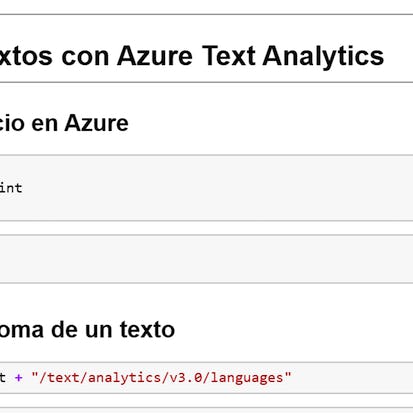- Level Professional
- Duration 30 hours
- Course by University of Washington
-
Offered by

About
This course is an introduction to the basic concepts of programming languages, with a strong emphasis on functional programming. The course uses the languages ML, Racket, and Ruby as vehicles for teaching the concepts, but the real intent is to teach enough about how any language “fits together” to make you more effective programming in any language -- and in learning new ones. This course is neither particularly theoretical nor just about programming specifics -- it will give you a framework for understanding how to use language constructs effectively and how to design correct and elegant programs. By using different languages, you will learn to think more deeply than in terms of the particular syntax of one language. The emphasis on functional programming is essential for learning how to write robust, reusable, composable, and elegant programs. Indeed, many of the most important ideas in modern languages have their roots in functional programming. Get ready to learn a fresh and beautiful way to look at software and how to have fun building it. The course assumes some prior experience with programming, as described in more detail in the first module. The course is divided into three Coursera courses: Part A, Part B, and Part C. As explained in more detail in the first module of Part A, the overall course is a substantial amount of challenging material, so the three-part format provides two intermediate milestones and opportunities for a pause before continuing. The three parts are designed to be completed in order and set up to motivate you to continue through to the end of Part C. The three parts are not quite equal in length: Part A is almost as substantial as Part B and Part C combined. Week 1 of Part A has a more detailed list of topics for all three parts of the course, but it is expected that most course participants will not (yet!) know what all these topics mean.Modules
Welcome Information
1
Discussions
- Discussion Forums: Why Are You Participating?
7
Videos
- Welcome! (And Some Course Mechanics)
- Optional: Who I Am / Acknowledgments
- What the Course is About / Initial Motivation
- Recommended Background
- Why Part A, Part B, Part C
- Grading Policy
- Optional: Very High-Level Outline
5
Readings
- Start here!
- About the Course
- Some More Perspective on Recommended Background
- Why are there 3 courses (Part A, Part B, Part C)?
- Grading Policy Details
Installation Instructions
2
Readings
- Part A Software Installation and Use: SML and Emacs
- Why Emacs? (Optional)
Videos Showing Installation Steps (Optional)
4
Videos
- Software Installation Introduction
- Emacs installation
- SML installation
- SML Mode installation
Homework 0 (Optional)
- Homework 0 (Auto-Grader)
1
Peer Review
- Homework 0 (Peer Assessment)
1
Readings
- Homework 0 Detailed Peer-Assessment Instructions
Section-Wide Items
3
Readings
- Section 1 Welcome Message
- Section 1 Reading Notes
- Code Files for All Section 1 Videos
Video Lectures
17
Videos
- ML Variable Bindings and Expressions
- Rules for Expressions
- The REPL and Errors
- Shadowing
- Functions Informally
- Functions Formally
- Pairs and Other Tuples
- Introducing Lists
- List Functions
- Let Expressions
- Nested Functions
- Let and Efficiency
- Options
- Booleans and Comparison Operations
- Benefits of No Mutation
- Optional: Java Mutation
- Pieces of a Language
Homework 1
- Homework 1 (Auto-Grader)
1
Peer Review
- Homework 1
1
Readings
- Homework 1 Detailed Guidelines for Peer Assessment
Community-Contributed Resources
2
Readings
- Hints and Gotchas for Homework 1
- Extra Practice Problems
Section-Wide Items
3
Readings
- Section 2 Welcome Message
- Section 2 Reading Notes
- Code Files for All Section 2 Videos
Video Lectures
22
Videos
- Building Compound Types
- Records
- Tuples as Syntactic Sugar
- Datatype Bindings
- Case Expressions
- Useful Datatypes
- Pattern Matching So Far
- Another Expression Example
- Type Synonyms
- Lists and Options are Datatypes
- Polymorphic Datatypes
- Each of Pattern Matching / Truth About Functions
- A Little Type Inference
- Polymorphic and Equality Types
- Nested Patterns
- More Nested Patterns
- Nested Patterns Precisely
- Optional: Function Patterns
- Exceptions
- Tail Recursion
- Accumulators for Tail Recursion
- Perspective on Tail Recursion
Homework 2
- Homework 2
1
Peer Review
- Homework 2
1
Readings
- Homework 2 Detailed Guidelines for Peer Assessment
Community-Contributed Resources
2
Readings
- Hints and Gotchas for Homework 2
- Extra Practice Problems
Section-Wide Materials
3
Readings
- Section 3 Welcome Message
- Section 3 Reading Notes
- Code Files for All Section 3 Videos
Video Lectures
23
Videos
- Introduction to First-Class Functions
- Functions as Arguments
- Polymorphic Types and Functions as Arguments
- Anonymous Functions
- Unnecessary Function Wrapping
- Map and Filter
- Generalizing Prior Topics
- Lexical Scope
- Lexical Scope and Higher-Order Functions
- Why Lexical Scope
- Closures and Recomputation
- Fold and More Closures
- Closure Idiom: Combining Functions
- Closure Idiom: Currying
- Partial Application
- Currying Wrapup
- Mutable References
- Closure Idiom: Callbacks
- Standard-Library Documentation
- Optional: Abstract Data Types With Closures
- Optional: Closure Idioms Without Closures
- Optional: Java Without Closures
- Optional: C Without Closures
Optional But Highly Recommended: Course Motivation
5
Videos
- Course-Motivation Introduction
- Why Study General PL Concepts?
- Are All PLs the Same?
- Why Functional Languages?
- Why ML, Racket, and Ruby?
Homework 3
- Homework 3
1
Peer Review
- Homework 3
1
Readings
- Homework 3 Detailed Guidelines for Peer Assessment
Community-Contributed Resources
2
Readings
- Hints and Gotchas for Section 3
- Extra Practice Problems
Section-Wide Materials
3
Readings
- Section 4 Welcome Message
- Section 4 Reading Notes
- Code Files for All Section 4 Videos
Video Lectures
18
Videos
- Section Introduction
- What is Type Inference
- ML Type Inference
- Type Inference Examples
- Polymorphic Examples
- Optional: The Value Restriction and Other Type-Inference Challenges
- Mutual Recursion
- Modules for Namespace Management
- Signatures and Hiding Things
- A Module Example
- Signatures for Our Example
- Signature Matching
- An Equivalent Structure
- Another Equivalent Structure
- Different Modules Define Different Types
- Equivalent Functions
- Standard Equivalences
- Equivalence Versus Performance
Community-Contributed Resources
1
Readings
- Nothing (yet) (explanation)
Part A Exam
2
Assignment
- Practice Exam for Part A
- Exam for Part A
1
Readings
- Information About the Exam (Required Reading)
Part A Wrap-Up
1
Videos
- Part A Wrap-Up & Parts B&C Preview
Auto Summary
Dive into the fundamentals of programming languages with a focus on functional programming in "Programming Languages, Part A." Led by expert instructors, this IT & Computer Science course utilizes ML, Racket, and Ruby to teach core concepts. Aimed at professionals with some programming experience, the course spans 1800 minutes and offers Starter and Professional subscription options. Enhance your programming skills and learn to design elegant, reusable software through this engaging and challenging course.

Dan Grossman


